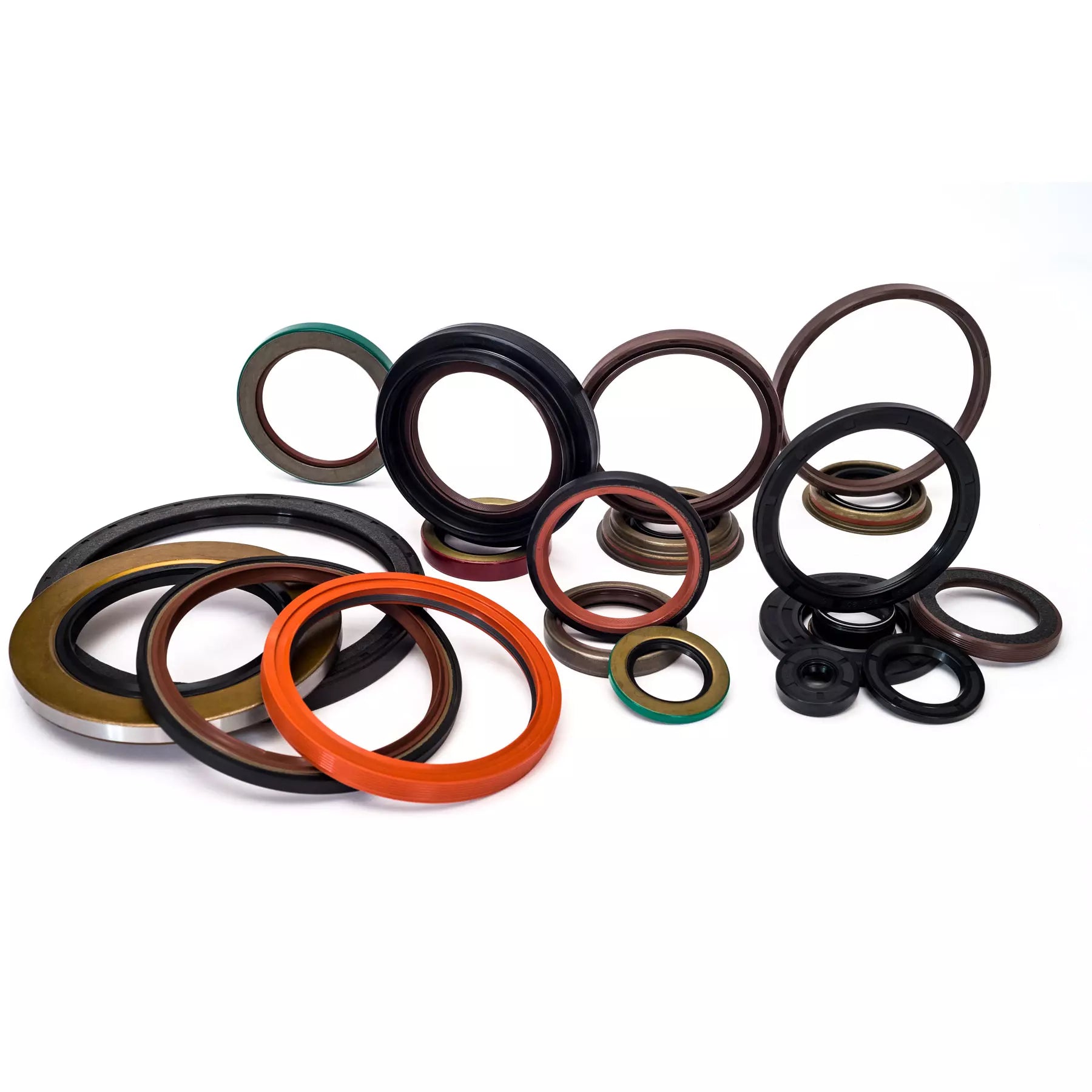FKM Fluororubber or Nitrile Rubber O-ring - Which one to choose?
When searching for O-rings, there are many different materials available. FKM fluororubber and nitrile are the two most common materials used to manufacture O-rings, and there is ample reason for this. Both have excellent performance, good compression permanent deformation, and different chemical resistance. So, which material is suitable for your application?
Nitrile O-ring
Nitrile rubber O-ring, commonly known as NBR or nitrile rubber, is the most commonly used O-ring in the market. These O-rings are usually also the cheapest option. However, nitrile O-rings have many chemical and environmental limitations.
Nitrile is a synthetic copolymer of acrylonitrile and butadiene, but the percentage of acrylonitrile can alter its properties. As the percentage of acrylonitrile changes, the temperature range can increase, but it will lead to a decrease in resistance to oil and fuel, and vice versa. Whether increasing or decreasing, this change in the percentage of acrylonitrile will increase the cost of nitrile O-rings.
In addition, nitrile O-rings can be hydrogenated, also known as HNBR, to increase the temperature range and resist oil, fuel, ozone, and some irritating chemicals. However, this will also increase the cost of materials. For comparison, let's assume that standard acrylonitrile content is used and the material is not hydrogenated.
FKM Fluororubber O-ring
In short, Viton ® It is a well-known brand of FKM or FPM materials. However, whether referred to as Viton or not ®、 FKM or FPM, both materials are equivalent. Viton ® O-ring is another very common type of O-ring due to its high temperature range and durability.
Viton used for manufacturing O-rings ® There are many types of materials: Viton ® A、Viton ® B and Viton ® F, And many other materials. Viton ® A、Viton ® B and Viton ® The main difference between F lies in the fluorine content, among which Viton ® A is 66%, Viton ® B is 68%, Viton ™ F is 70%. Viton ® A is the most commonly used version, but Viton ® B and Viton ® F is also frequently used when needed in applications. For comparison, we assume to use Viton ® A。
What is the difference between fluororubber and nitrile rubber?
Comparing Nitrile and Fluororubber ® The next step is to decide which one is suitable for your application. However, we still need to have a better understanding of nitrile and fluororubber ® The difference between O-rings. So, then, Viton ® What is the difference between nitrile O-rings?
temperature
The temperature range for nitrile O-rings is -35 ° C (-30 ° F) to 120 ° C (250 ° F).
Viton ® The temperature range of the O-ring is -20 ° C (-5 ° F) to 210 ° C (-410 ° F).
benefit
Fluororubber O-rings are more resistant to chemicals, extreme conditions, and mold than nitrile. Viton ® Both nitrile O-rings have good wear resistance and tear resistance, but nitrile has higher wear resistance.
limitation
Nitrile O-rings perform poorly in harsh chemical or outdoor applications. In addition, when specific formulas are needed for higher or lower temperature ranges, the resistance to different liquids will decrease. In addition, Viton ® O-rings should not be used in brake fluid, ketones, hot water, or low-temperature environments.
Common applications and uses
Fluororubber and nitrile O-rings are used for various applications. Nitrile O-rings are commonly used in hydraulic, pneumatic, and fuel applications. This is particularly true in automotive equipment, off-road equipment, some military applications, marine equipment, and aircraft fuel systems. Viton ® O-rings can usually be found in automobiles, airplanes, and other mechanical equipment, especially those that require more demanding chemicals.
cost
Nitrile is usually better than Viton ® It's much cheaper. However, the special formula of nitrile will increase the price.
Which material is suitable for your application?
The appropriate material largely depends on the application. Although nitrile and fluororubber ® There are both positive and negative aspects, but any material may meet your needs. For example, assuming the standard operating temperature is between 0 ° C (32 ° F) and 100 ° C (212 ° F). In this case, the application is internal, lubricated with standard hydraulic oil, and there are no irritating chemicals present; Based on cost, nitrile will be a better choice.
However, if the temperature rises, the application will be outdoors or under ultraviolet light, or more demanding chemicals will be used, Viton ® It will be a better choice. However, similarly, a comprehensive review of all aspects of the application will help you determine which O-ring is most suitable.
If you need help navigating this process to find the seal that suits your project, please consult DMB seal team. We have over 15 years building relationships with global seal manufacturers, providing you with thousands of types of seals, gaskets, O-rings, and other special products suitable for any application.

